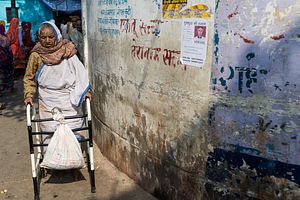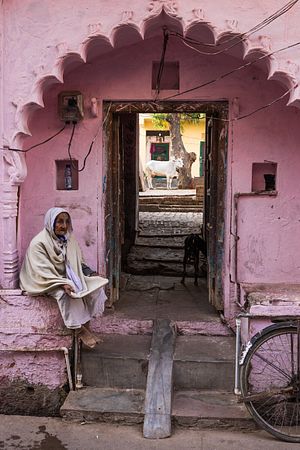There are approximately 34 million widows in India. In the traditional view, they are physically alive but socially dead. They were expected to die before their husbands or along with them. Most of the widows experience deprivations and discrimination on a daily basis, not least of which include suffering from severe depression because of isolation and the absence of emotional and social support.
Widows are socially stigmatized and must forego all forms of make up and symbols of marriage or femininity. Traditional superstitions mark them as inauspicious. That is why widows are banned from some religious ceremonies and weddings (sometimes even of their own children’s wedding ceremonies). Widows’ access to resources typically ends with the demise of the husband. A lot of them are not able to support themselves and become economically and socially dependent on their children, who often face problems in sharing their resources with their mothers. In many cases, the mother becomes a burden and is consequently abandoned.
Although the Constitution now guarantees widows certain rights, this is often obscured by lack of information. Widows are often not aware of their legal rights, nor could they afford a lawyer to assist them. Sometimes widows even subordinate themselves under customs, for the sake of the family harmony, and forfeit their inheritance to their children or in-laws. Living in oppressive environments, some widows come to the holy city of Vrindavan in order to devote themselves to Lord Krishna and find salvation and peace. But even here some depend mainly on begging, singing devotional songs and charity.
Fortunately, there is a change happening in the attitudes of people regarding widows, particularly in urban India. The exodus of widows to the holy city of Vrindavan has slowed to a trickle, with more and more widows opting to stay with their children, who are running double income homes. Many widows, if they opt to come to the holy cities, are also doing it out of choice, seeking a life dedicated to spirituality.
Non-governmental organizations are taking measures to empower widows. These organizations run shelter homes and capacity-building centers, where widows are taught skills and are given the comfort of food — at least one warm meal a day — medicine, tap water, and shelter, so they do not fall victim to exploitation on the streets. But still the need for improvement is huge and interventions are few. Change is taking place, but slowly.
Sascha Richter Le is a photographer from Berlin, Germany.










































